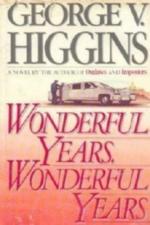|
This section contains 234 words (approx. 1 page at 300 words per page) |

|
Although Higgins rebels with some justice against categorization as a "crime novelist," the crime novel certainly provides one context for interpreting his fiction. Writers of proletarian crime fiction of the 1930s such as Edward Anderson and W. R. Burnett are Higgins's predecessors in this regard. He moves beyond them in his commitment to narrating the experiences of his characters in their own language, a commitment which finds its greatest precedent in the work of Mark Twain. A third important literary manner which underlies Higgins's approach, especially in a work like Wonderful Years, Wonderful Years, is the novel of social observation, exemplified in the fiction of one of Higgins's favorite writers, John O'Hara.
While Higgins's approach to his material justifies regarding him as a major contemporary novelist, he does sometimes betray his roots in popular literature. In Wonderful Years, Wonderful Years, the only real villain is the...
|
This section contains 234 words (approx. 1 page at 300 words per page) |

|




